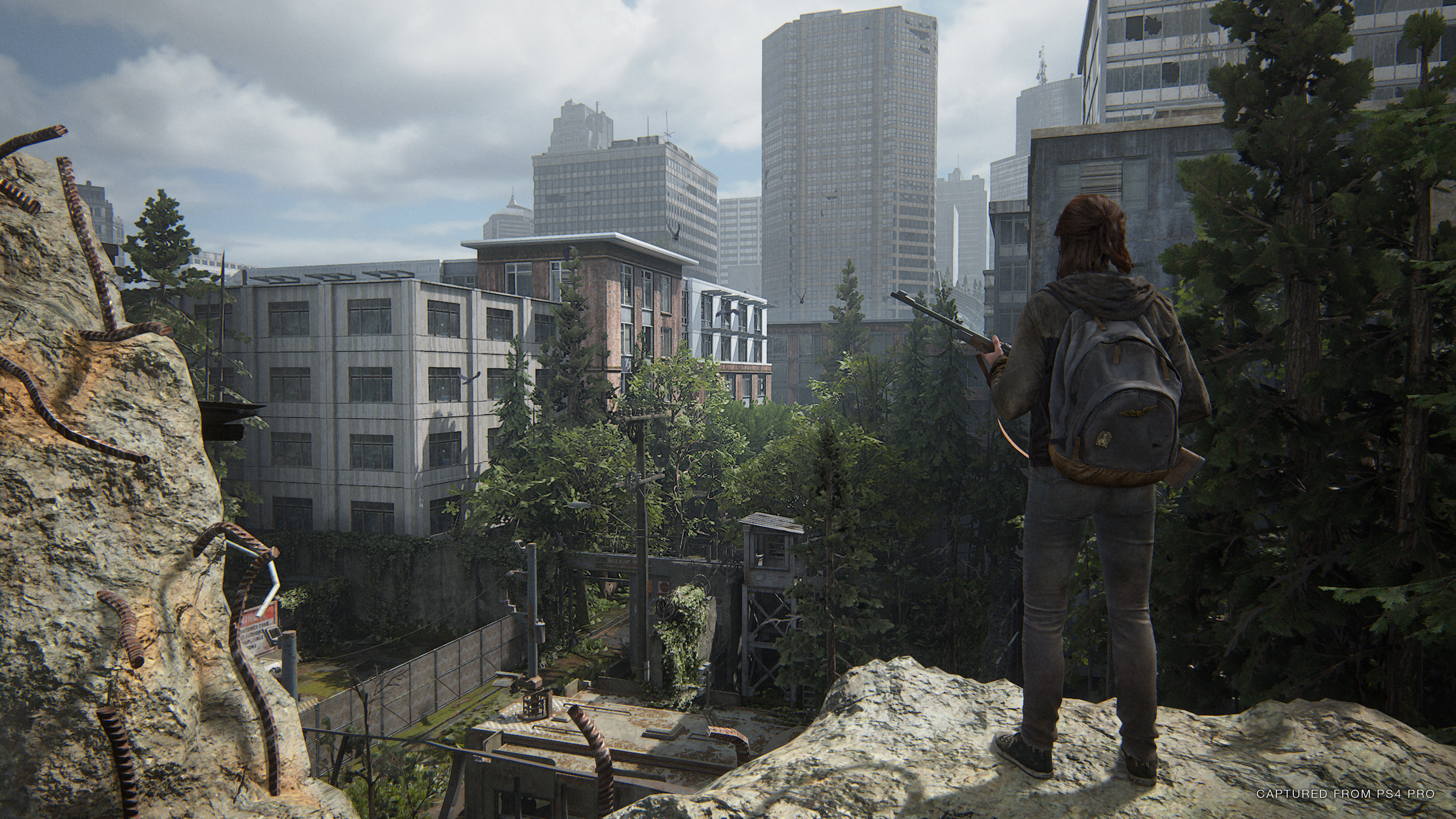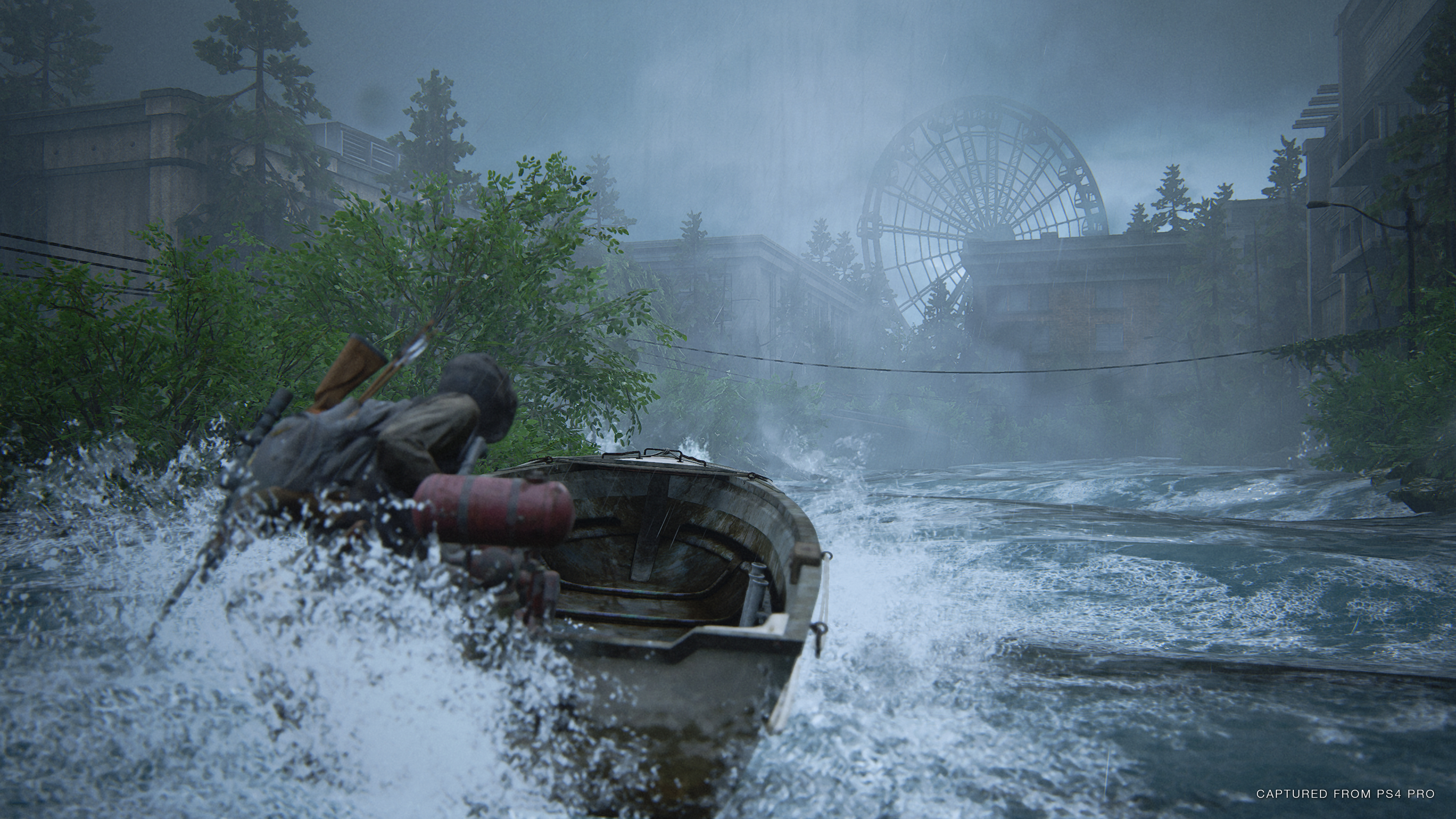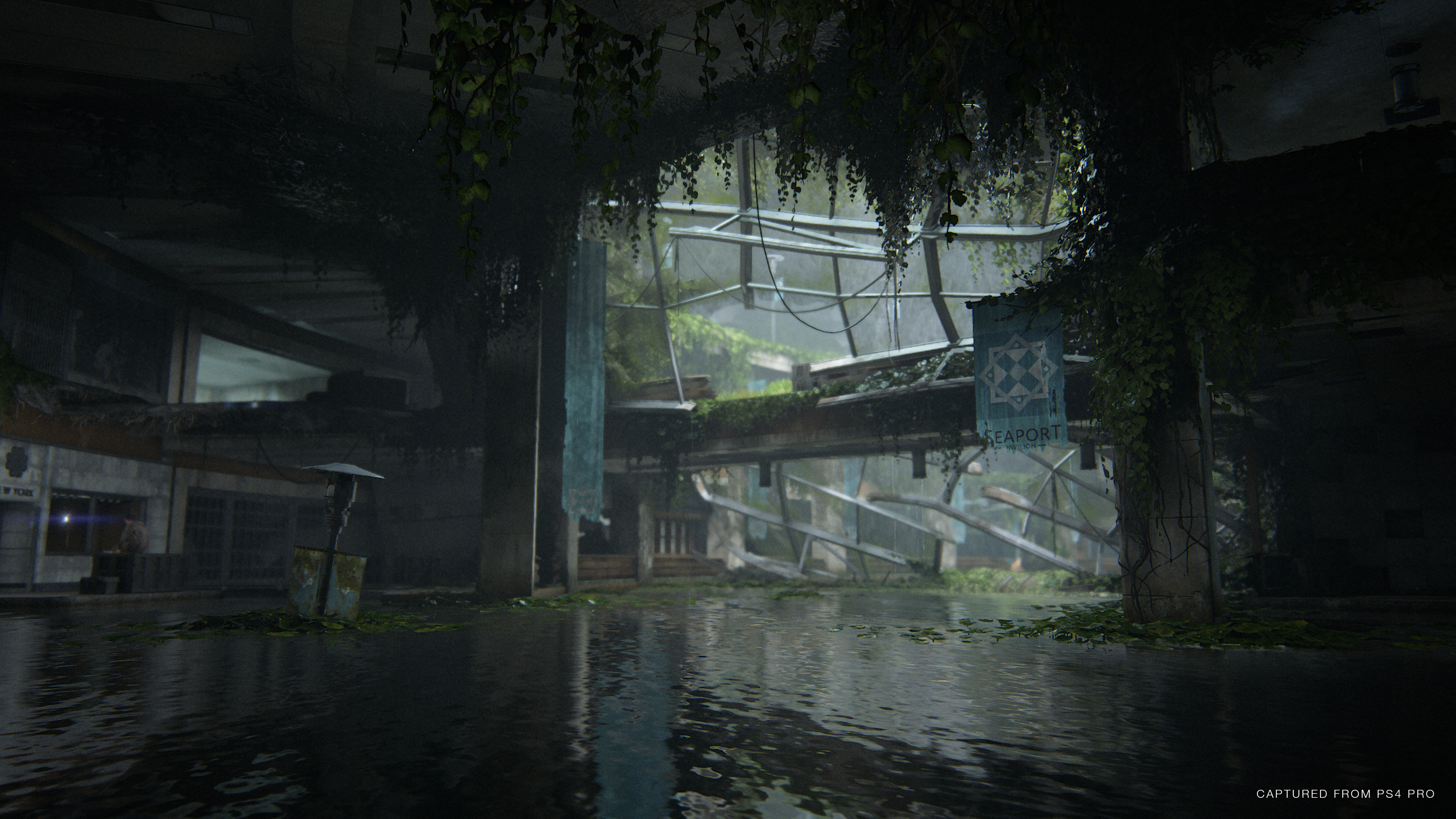There is a common saying that if you seek revenge, you should dig two graves. Playing The Last of Us Part II is like being made to dig those graves with your teeth.
It is over two dozen hours of spiraling cycles of violence and vengeance, being reminded roughly every hour that the whole endeavor is squalid and cruel. There is hardly a moment of joy it will not eventually curdle. A truly shocking number of characters that you will come to care about will be gruesomely mutilated, or slaughtered, or both. All of it is utterly predictable, or if you’re feeling charitable, tragically fated.
But by the end, like the main characters of The Last of Us 2, I didn’t have much charity left to extend. The game’s operatic tone and length can’t obscure the simplicity of the themes it repeats to exhaustion, and its grandiosity is poorly served by a Naughty Dog house style that has become less a signature than a straitjacket.

2013’s The Last of Us ended on a grim, ambivalent note. What had begun as a quest to save the world ended in a massacre that denied salvation. This was the brutal, but effective, payoff to a game about the deepening bond between the mercenary Joel Miller and the young woman he was assigned to protect, Ellie. The only person in the world known to be immune to a fungal parasite that had turned much of the world’s population into mutant zombies, Ellie was meant to be sacrificed in order to find a cure. Joel, a man embittered by the death of his daughter and hardened by years of violence, freed the unconscious Ellie from the research lab where she was going to be vivisected, for reasons as selfish as they were sympathetic. At the end, he tells a skeptical Ellie that the scientists did not need to study her after all, and that they had plenty of other test subjects who were immune. Just like that, Joel plants seeds of distrust in his relationship with Ellie while making himself the villain to everyone who depended on him for the creation of a cure.
Joel and Ellie face a reckoning for those decisions early in The Last of Us Part 2. However justified that reckoning may be, the horror of it sets in motion a long revenge quest that brings Ellie and her allies to war-torn Seattle. There they find themselves navigating all-out-war between different factions of plague survivors, as a truce unravels in an orgy of reprisal killings.
Yet even as you play from Ellie’s POV, with some new companions and in a new setting, it’s shocking how little has changed. Seattle feels much the same as Boston did in the first game, which was not too dissimilar to Pittsburgh, and so-on. Once again you are navigating fairly uniform urban ruins in the process of being reclaimed by nature. Your path is clearly laid-out before you as you traverse areas that are meant not to impose obstacles, but suggest the idea of obstacles. Your character overcomes one challenge after another through wit and strength… but all you actually do as a player is follow an obvious path to a clearly-marked crack in the wall leading to the next area.

The combination of stealth and action gameplay remains largely unchanged. Zombies still shamble around trying to hear your approach, while humans walk regular patrol circuits. Both are easily distracted by lures, and can be choked or stabbed to death from behind. Nor is the world particularly dangerous, despite its devastation and horrors: every surprise attack is telegraphed. Enemies always announce themselves, giving you ample time to come up with a plan of attack. It has all the aesthetics of motifs of a survival horror game, yet none of their pushback.
For instance, The Last of Us 2 suggests post-apocalyptic scarcity but in truth the whole world is a great big ammo magazine, so shootouts aren’t as fraught as they initially appear. While you can’t carry too much ammo for any one weapon, you have a decent selection of weapons and there is always plenty of fresh ammo and crafting equipment to be looted from your surroundings. Anything you need is always close at hand. In fact this might be the least challenging of any of Naughty Dog’s action-adventures, despite the fact that your characters are supposed to be beleaguered survivors on the ragged edge, not the self-assured heroes of a lighthearted blockbuster.
There are still great moments. There’s a memorable sequence where you have to descend through an infested skyscraper, where the walls feel like they are closing in on you and the room-to-room fighting feels nightmarish and tense as it unfolds at point-blank range. A remarkably detailed and precise surround sound audio mix brings each setting to life, creating a vivid sense of presence that the overly-signposted visuals sometimes lack. In the too-rare moments when The Last of Us 2 unfurls a spectacular tableau, like dashes through pitched street battles or zombie onslaughts, it is a reminder that Naughty Dog remains among the best studios for crafting cinematic action sequences. But the strength of those moments also emphasizes how flat and featureless the rest of the game can feel.

That puts a lot of pressure on the storytelling of The Last of Us 2 to carry the experience, but while there is a lot of story to be told here, it doesn’t have much to say. It doesn’t take long to make crystal clear that our heroes’ revenge stories are making them the villains in other people’s narratives. Even before it begins trying to humanize the people you are busy killing, The Last of Us 2 is a game of squalid cruelty. It’s not just the fact that you torture and kill people even as they plead with you to spare them, or the incredibly detailed destuction of faces and bodies that happens with shocking regularity throughout this game. It is also the growing lack of justification. Nobody ever reconsiders their quest for vengeance. Everyone acts under a kind of vindictive compulsion that goes little remarked and unexamined.
Anger and grief are understandable motivations at the start of a revenge quest, but The Last of Us 2 never follows-through on the work of exploring what sustains them past reason and scruple. That’s why it falls short of its ambitions of being a work of tragedy, despite roundly excellent performances by the cast. The characters’ motivations are enough to understand, but they’re also increasingly less compelling as the game drags on and the losses mount. It’s little wonder that some of the game’s best moments come during a major subplot that gives us respite from the vendettas—and characters—that drive most of the game’s action. The things that serve as the catalyst for a story aren’t always interesting reasons for its continuation, but that doesn’t stop The Last of Us 2 from revisiting the same traumas every time it needs to justify the next bloodbath, and hopes that the screams and gurgles of the dying will give it meaning.
The Last of Us Part II feels complacent, yet also preoccupied with its predecessor. Every facet of the original game has been expanded and enlarged in the sequel, but not actually improved. It is as if its only inspiration is the original game, and the well of pop culture it was drawing from. There is practically nothing here we haven’t seen and done repeatedly throughout previous Naughty Dog games. It sets out to surpass its predecessor, but the only meaningful contrast between them is in its even more oppressive bleakness and violence. It digs two graves, fills them with blood, and then just fucking wallows in them.
from VICE https://ift.tt/2XSgek0
via cheap web hosting
No comments:
Post a Comment